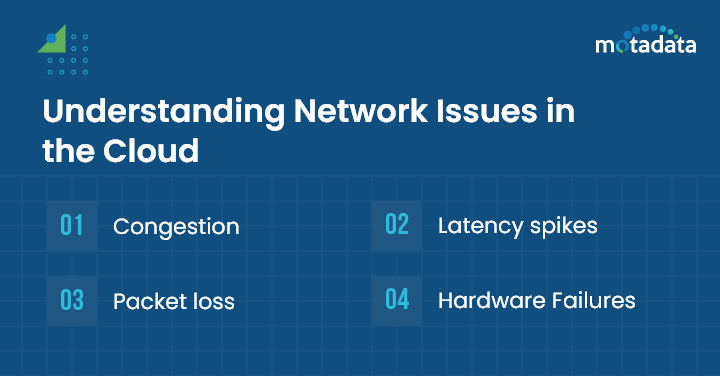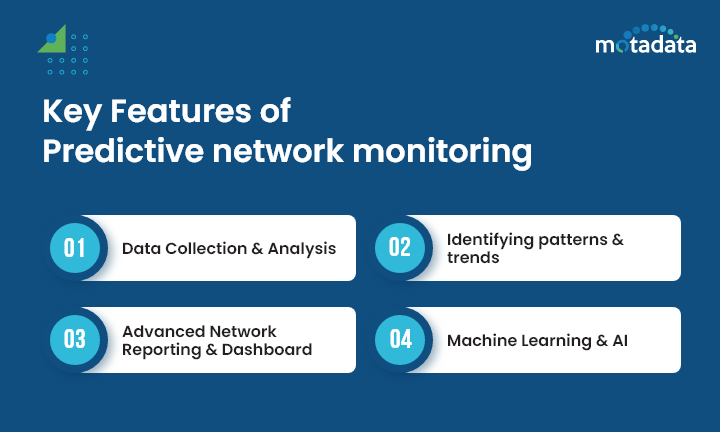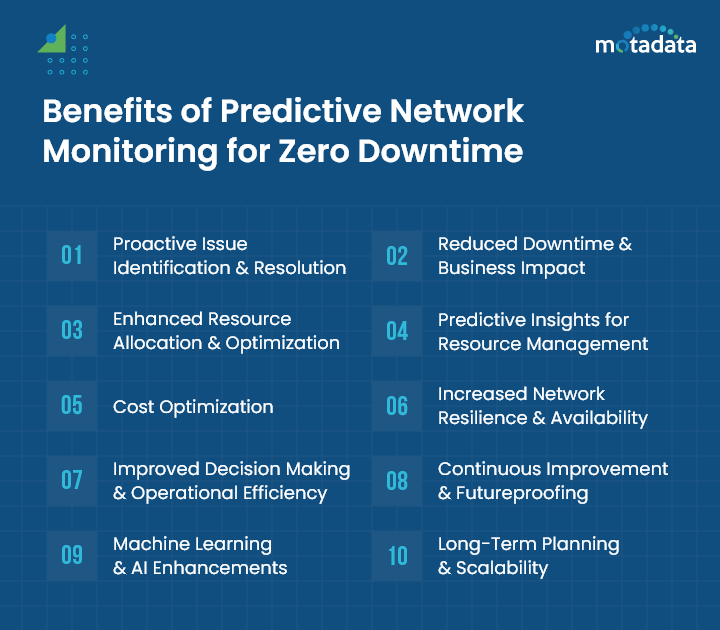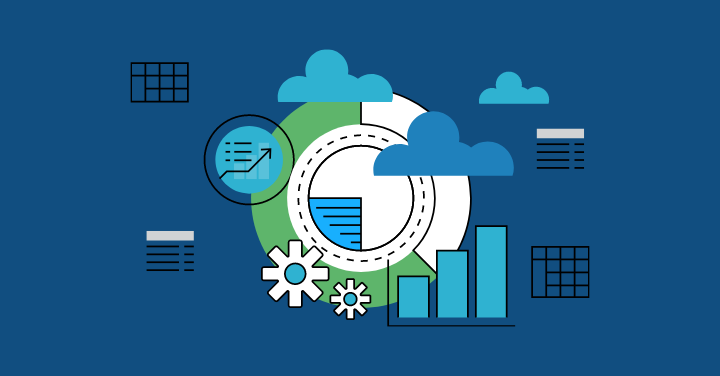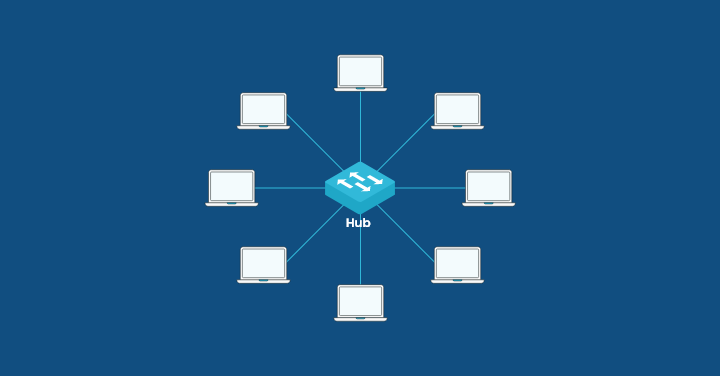Today, more and more businesses are scaling their IT infrastructure and adapting digital technologies to increase their visibility and revenue.
Around 90% of businesses heavily rely on cloud services to run their operations smoothly.
Now imagine due to a minor fault in your network system, the whole process comes to a halt leading to unsatisfied customers, reputational damage, and financial losses.
It is true that cloud computing eliminates hardware and software installation expenses, makes it easier for users to access cloud services from anywhere, and has many more advantages.
But, maintaining a cloud infrastructure with good user experience and no downtime is still a major challenge.
In the cloud environment, zero downtime means ensuring that all your cloud operations take place without disruption or downtime.
But, issues in the network performance, latency spikes, and other problems can impact your cloud services and disrupt their functioning.
It is essential to understand the importance of network management and how it can affect the application and performance.
The traditional methods can no longer address the complexities of the modern cloud environment.
But with the Predictive network monitoring approach, your business can foresee possible problems before they become major problems that cause downtime.
Let us understand this approach in detail and how you can achieve zero downtime and maximize productivity with it.
Understanding Network Issues in the Cloud
Before we proceed with the predictive network monitoring approach, it is essential to understand some of the common network issues that can disrupt your performance and halt all functions.
These problems not only compromise the functionality of cloud services and apps, but they also severely compromise user satisfaction and business operations.
Here are the major network issues in the Cloud that may lead to downtime.
1. Congestion
When a network receives more data packet traffic than it can handle, congestion on the network arises.
Due to sales or product launches often an application experiences heavy incoming traffic.
Similarly, when there are too many simultaneous demands for data and communications over a network with insufficient bandwidth, Network congestion happens.
This further results in bottlenecks, delays in service delivery, and reduced performance.
In the cloud environment, it can result in bad user experience and response times.
Hence, it is essential to timely monitor the traffic patterns of the network and identify the congested areas in real time before they cause any disruption.
However, with a predictive network monitoring approach you can achieve this goal.
This approach enables team members to predict the areas of congestion that further aid in adopting proactive measures before the problem escalates.
2. Latency spikes
This network issue generally occurs due to a sudden or unexpected delay in data transmission or communication between two parties. Let’s say a client uses your cloud-based application for data entry tasks.
In normal days, the low latency of the application allows it to react to user requests fast.
However, due to the latency spike, now the same application’s processing and response times increase.
This spike may happen due to several factors, including network congestion and a surge in user traffic, but what one needs to worry about is it can severely affect application performance.
Hence, it is crucial to identify the root cause of latency spikes and address the issue at an early stage to achieve zero downtime.
Predictive network monitoring solution comes with advanced monitoring capabilities and analytical technologies with which organizations can detect potential latency issues at an initial stage and take immediate actions for smooth operations.
3. Packet loss
Packet loss is another common network issue that generally occurs when the data packets fail to reach the requested destination, resulting in congestion and other network issues.
The only solution to prevent packet loss issues is to constantly track the network traffic patterns and identify packet loss issues in real time so that proactive steps can be taken.
Organizations may reduce the risk of downtime and handle network issues proactively with predictive network monitoring.
With this approach, users can analyze historical data, spot trends, track patterns, and forecast possible packet loss issues.
4. Hardware failures
Even a minor fault in the network equipment can have a significant effect on the cloud applications and services especially when the infrastructure is shared among multiple clients.
Similarly, power outages and other hardware failures can halt the functioning and cause downtime.
Detecting hardware faults, automating incident response, and ensuring quick issue resolution all depend on having proactive monitoring methods in place.
Organizations may prevent risks, detect possible hardware problems, and keep services available even when hardware fails by implementing predictive network monitoring
Predictive Network Monitoring for Proactive Approach
Predictive network monitoring uses a deep learning architecture and advanced analytics to forecast the behavior of networks based on different parameters rather than precise design guidelines.
This approach enables security teams and other members to identify and address potential threats and network issues before they impact the application performance or service availability.
It facilitates continuous monitoring and improves incident response efficiency by gathering and evaluating performance metrics over time.
Predictive models make use of artificial intelligence (AI) to detect security risks early on, such as illegal access or data breaches, protecting network operations from constantly changing cyber threats
Some of the Key Features of Predictive network monitoring are
1. Data Collection and Analysis
Large-scale networks use IoT devices and connected hardware constantly to generate large volumes of data.
Soon it turns into big data due to the complexity of complicated network operations; this means that users have more information than they can effectively store and evaluate.
With Predictive models this feature, users can constantly collect this information and run analysis to track the new patterns and trends.
The predictive models use advanced analytics and machine learning algorithms to spot trends and issues before the impact performance.
Further, early warnings help improve the efficiency of incident response. Users can even track historical data and manage networks with accurate predictions.
2. Identifying patterns and trends
By taking early measures to address issues before they get worse, network managers can avoid downtime.
This system continuously improves over time by utilizing AI and machine learning.
In addition to preventing network outages, it maximizes network efficiency, improving customer experience in the face of the growing reliance on cloud services.
Proactive network management is especially important for enterprises to ensure seamless operations.
3. Advanced Network Reporting and Dashboard
The predictive network monitoring models offer comprehensive reporting capabilities as well as an intuitive dashboard that helps interpret all the big data collected from different sources in a simple manner.
Thus, helping operational teams to make better and informed decisions.
The intuitive dashboard provides a centralized view of all the network monitoring and management tasks as well as insightful reports for further analysis.
4. Machine Learning and AI
This approach makes use of machine learning algorithms and artificial intelligence to forecast the future performance of networks as well as potential issues.
By leveraging this approach, users can reduce downtime and ensure uninterrupted service delivery via cloud applications and services.
Read Also: How AI & ML Will Impact Network Monitoring
Benefits of Predictive Network Monitoring for Zero Downtime
Operations teams can improve the reliability and efficiency of network operations by using a predictive network monitoring approach.
There are various benefits to implementing predictive models, including:
1. Proactive Issue Identification and Resolution
With the help of advanced analytics and machine learning algorithms, predictive network monitoring helps operational teams identify potential issues and measures to address the issue swiftly, thus enhancing application performance.
Further, the continuous monitoring capabilities help in the early detection of potential security threats and empower accurate predictions that play a key role in effective network management.
With quick, valuable insights on potential network issues, businesses can prevent downtime and ensure a better user experience
2. Reduced Downtime and Business Impact
With continuous monitoring, network administrators and service providers will be able to anticipate and prevent network problems from escalating. As a result, the critical systems and services will experience less downtime.
Due to the decreased interruptions and high productivity, this decrease in downtime will directly improve your business continuity
3. Enhanced Resource Allocation and Optimization
Another key benefit of Cloud with Predictive network analytics is it provides deeper insights into network behavior, resource utilization, patterns, and trends.
With the help of this information, operation teams can better allocate resources and ensure that the network capacity is neither underutilized nor overutilized. Also, the potential bottlenecks are tracked and addressed in real time
4. Predictive Insights for Resource Management
Using this approach, administrators gain access to go through all the historical data and user behavior, perform analysis, and forecast future demands.
With the help of these predictive insights, organizations can make more informed decisions and better allocate resources as well as meet both present and future needs
5. Cost Optimization
Operational teams can further analyze the resources that are underutilized and resulting in unnecessary expenditures using this proactive approach.
It allows tracking resource usage and expenses on reactive maintenance. With the help of these insights, businesses can manage their operational expenses and improve the ROI rate
6. Increased Network Resilience and Availability
By spotting weaknesses and possible points of failure before they have an influence on operations, predictive monitoring increases the resilience of networks.
By taking a proactive stance towards risk management, network availability is increased and continuous access to vital services is guaranteed
7. Improved Decision Making and Operational Efficiency
The real-time insights into the health, availability, and performance of networks allow team members to make more informed decisions.
Further, these insights help in optimizing the operational processes and capacity planning, leading to improved efficiency.
8. Continuous Improvement and Futureproofing
By helping businesses find opportunities for innovation and optimization, predictive network monitoring promotes a continuous improvement culture.
Through the application of machine learning and predictive analytics, enterprises can future-proof their network infrastructure and adjust to evolving technological trends
9. Machine Learning and AI Enhancements
Using machine learning, artificial intelligence, and advanced algorithms, businesses can constantly learn from historical data and improve their predictive capabilities.
The self-learning component improves the dependability and precision of network predictions
10. Long-Term Planning and Scalability
Lastly, with the use of these insights, organizations may plan for expansion or upgrades, project future network requirements, and make sure that their network infrastructure can grow with their company.
Implementing Predictive Network Monitoring
Optimizing resource consumption, enhancing application performance, and improving security incident response can all be achieved by ensuring effective network administration.
Here are the key steps for implementing predictive network monitoring in the cloud, including:
1. Selecting the right monitoring tools and solutions
It is essential to carefully invest your money and time into potential solutions that offer precise insights into network operations in order to enable effective predictive monitoring.
For a seamless integration and to satisfy the criteria of predictive monitoring, the selected tools must be in line with the unique demands of cloud predictive monitoring.
Network management teams can use the power of AI to better anticipate performance issues and respond to them more quickly by putting the appropriate monitoring technologies in place.
This will guarantee ongoing monitoring and better network performance.
2. Configuring data collection and analysis pipelines
Effective data pipelines are essential for optimizing predictive monitoring.
If you use well-configured data collection techniques, you will gain access to accurate insights.
Creating analysis pipelines that are optimized increases the efficacy of monitoring. In short, predictive monitoring is more effective when data processing is streamlined.
3. Setting up alerts and notifications for potential issues.
Make sure to configure an alert system that triggers as and when it detects issues in the network system.
With these alerts, users get notified of the problem at an early stage, resulting in timely problem resolution.
By implementing swift alert systems, admins can respond to queries and issues in real time and address the potential challenges before they impact network performance and availability.
4. Integrating monitoring with existing cloud management tools.
Effective communication between the management and monitoring systems is encouraged by the seamless integration of predictive monitoring with cloud-based technologies.
By facilitating seamless communication between cloud tools and monitoring systems, you promote synergy and improve overall network management.
Conclusion
In order to enhance network performance, security, and end-user experience, predictive network technology should be seen as a collection of network intelligence capabilities rather than as a single solution.
By leveraging predictive network monitoring strategies, operational and security teams can achieve zero downtime efficiency.
This robust approach uses data analytics to traffic network devices and sensitive data available in the complex cloud.
Early adopters of this practice will be able to better manage their networks and resolve major issues that may lead to downtime in real time.
Network congestion, latency spikes, hardware failures, and packet loss are some of the common network issues but can be resolved at an early stage with the right approach and monitoring capabilities.
Rather than investing in the traditional reactive monitoring approach, it is best to invest in a proactive network monitoring technique that will help in making accurate predictions and informed business decisions.
There are several benefits to using proactive network monitoring techniques such as quick issue detection, enhanced resource allocation, capacity planning, cost optimization, increased network resilience, and more.
So, make sure to rely more on predictive models and advanced analytics to improve your network operations and track user behavior.
FAQs
In the context of cloud services, zero downtime refers to guaranteeing continuous operations without any service interruptions or downtime. With the help of redundancy, failover techniques, and a proactive monitoring approach, businesses can accomplish this goal.
It ensures consumers will always have access to applications and services without any hassle. Users will not face delays in data transmissions, using cloud applications, and accessing other cloud services.
Some of the common challenges in achieving zero downtime in the cloud are network failures, security breaches, insufficient capacity planning, network congestion, latency spikes, and more.
Due to these common issues, users face service interruptions leading to bad experiences. If not addressed on time, these issues may increase the risk of downtime which can further impact overall system reliability and optimal performance.
By using historical data, predictive models can foresee network problems and facilitate proactive maintenance. Further, these models facilitate early problem-solving by identifying patterns and trends.
Also, they use AI alert systems to update teams about possible issues. With all these insights and measures, businesses are able to successfully prevent downtime and disruptions.
The size of the network and the features that are needed will determine how much it will cost to deploy predictive network performance monitoring.
Scalability and complexity of the infrastructure are two factors that affect expenses.
Setup fees, maintenance costs, software/hardware prices, and subscription fees are a few examples. It is recommended to assess the long-term benefits and obtain quotes from multiple vendors before making a final call.



